Latvians in America from 1949 to today
| In the period from 1949 to 1951, about 40,000 Latvian Second World War refugees arrived in America from DP camps in Germany, settling mainly in the largest northern cities. An active diaspora community life commenced immediately. A number of umbrella organizations were established like the “American Latvian Association” (ALA) in 1951 in Washington, the “Latvian Evangelical Lutheran Church in America”, “Daugavas Vanagi”, “American Latvian Youth Association” and various local societies and congregations, the goals of which were to bring Latvians together, to remind the world about the occupation of Latvia and to maintain the pre-war Latvian language and culture. These organizations published newspapers and books, established supplementary schools, university-level Latvian programmes, scout and guide camps, choirs, dance groups, theatre troupes and youth groups. Various events were also held – Youth Days, Kokļu dienas [Zither Days] and Song Festivals. After a while, Latvian organizations purchased churches and halls in the largest cities. Each year, Latvian national celebration days, as well as remembrance days, were observed and thousands of people gathered for regional or national Song Festivals. Political campaigns had an important place in American Latvian life, and American Latvians and their organizations tried to use these to influence the people of America, politicians and international institutions in a favourable way, defending Latvia’s interests and protesting against its occupation. Since 1951, the JBANK (“Joint Baltic American National Committee”) has operated in Washington, regularly lobbying USA politicians. In 1966, the Latvians and Lithuanians established BATUN (“Baltic Appeal to the United Nations”), which successfully defended the interests of the oppressed Baltic countries in the UN. Various anti-communist demonstrations took place, at both a local and international level, with the most dramatic being in 1980 during the Madrid Conference on European Security and Cooperation. |
Although many organizations have ceased to function over time, there are still at least 500 active organizations in the USA. For example, 19 Latvian supplementary schools operate in America, with the largest being in Washington DC, a school with 58 students. In 2000, more than 87,000 residents indicated that they were Latvians or that their ancestors were Latvian in the USA census, of whom about 10,000 were Latvian citizens.
Over the last twenty years many new arrivals from Latvia have enlarged the Latvian community in America, actively forming their own groups and sometimes getting involved in existing institutions.
After Latvia regained its independence, a relatively small number of American Latvians moved back to Latvia, among them mainly people from the younger generation who still hadn’t begun their careers in America and who didn’t have such close family ties as the middle and older generation. Many American Latvians regularly visit Latvia, and get involved in various ways in events and activities there.




